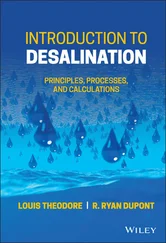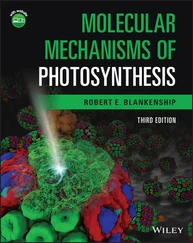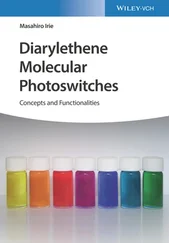Many pathways have been optimized during evolution to increase the rate and efficacy of them. One way is to organize all proteins of a certain pathway or reaction in form of multienzyme complexes, in which enzymes that share substrates and educts are in close vicinity, thus reducing diffusion rates. Another strategy is to concentrate the pathway enzymes in a particular cellular compartment, e.g. the citric acid cycle in mitochondria.
2.4 Structure of Nucleotides and Nucleic Acids (DNA and RNA)
Nucleotidesplay important roles in the cell: as energy carriers(ATP, adenosine diphosphate [ADP]); as coenzymes(FAD, NAD +, coenzyme A), during the transfer of sugar moieties (ADP‐glucose); and as building blocks for nucleic acids( Figure 2.17a). Nucleotides consist of the purine bases adenine and guanine and the pyrimidine bases cytosine and thymine or uracil, which form N‐glycosidic bonds with ribose or deoxyribose. The 5′‐hydroxyl group of the pentose is esterified with one, two, or three phosphate residues ( Figure 2.17b).

Figure 2.17 Structure of nucleotides. (a) Structures of purine and pyrimidine bases, pentoses, and ATP (as an example of a nucleotide). (b) Structures of ATP, AMP, ADP, glucose, FAD +, and coenzyme A.
Our genetic information is stored in the form of deoxyribonucleic acid ( DNA ). DNA is a macromolecule and is made up of nucleotide subunits bound together linearly ( Figure 2.18). DNA contains the bases A, T, G, and C; RNA contains the bases A, U, G, and C. The nomenclature of the bases, nucleosides, and nucleotides is explained in Table 2.7.
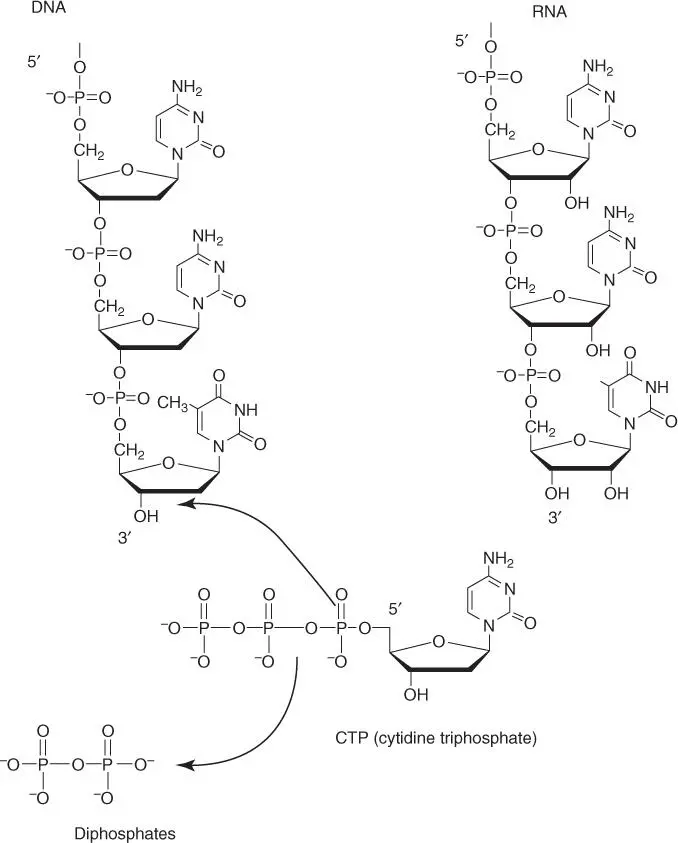
Figure 2.18 Linear structure of DNA and RNA. In nucleic acid biosynthesis, the α ‐positioned phosphate group of a nucleotide triphosphate (NTPs in RNA, dNTPs in DNA) is linked to the free 3′‐OH group of the available strand.
The nucleotides are the building blocks for DNA and RNA. Nucleotides are esterified into polynucleotide chains via a phosphate backbone. The 5′‐hydroxyl group (“five prime hydroxyl group”) of a pentose is linked via a phosphodiester bond to the 3′‐hydroxyl group of a second pentose ( Figure 2.18). During the biosynthesis of the nucleic acids, the respective nucleotide triphosphates are needed whose phosphoric acid anhydride bonds are especially rich in energy. In the completed nucleic acid, only nucleotide monophosphates are present. After cleavage of a diphosphate residue, the α ‐phosphate group attacks the free 3′‐end of the already existing nucleic acid strand and forms a new ester bond. The synthesis is said to occur in the 5′ → 3′ direction.
DNA exists as a double helixwhereby the bases A and T, and G and T, respectively, face each other in a complementarymanner ( Figure 2.19). Both DNA strands are arranged antiparallel to each other (i.e. within a helix one of the strands runs in the 5′ → 3′ direction, while the complementary partner strand is oriented in the 3′ → 5′ direction). The DNA double helix has a diameter of 2 nm.

Figure 2.19 Structure of the DNA double helix. The spatial orientation of the base pairs in the double helix and the principle of complementary base pairing between A and T, and G and C, respectively, via the formation of hydrogen bonds. (a) Schematic structure of the double helix. (b) Structural formula.
Complementary base pairingis achieved through the specific formation of two or three hydrogen bondsbetween A–T and G–C pairs, respectively ( Figure 2.19). This is an important example of a molecular recognition reaction via noncovalent bonds. Base pairing occurs spontaneously should the two bases meet. This results in the ability to self‐organize and to form supramolecular structures without the requirement of energy or regulatory helpers. The selectivity of complementary base pairing is an important requirement for basic genetic processes (e.g. replication, transcription, and recombination) and diagnostic procedures (e.g. Southern hybridization, DNA fingerprinting with DNA probes, quantitative PCR, and DNA microchips; see Chapters 21, 22, and 27).
In eukaryotes, the multiple negative charges on the backbone of the DNA double helix are complexed with basic, positively charged histone proteins( Figure 4.6); in prokaryotes, positively charged polyaminestake over this role. The bases are arranged inside of the helix and form planar stacks ( Figure 2.19). The inside of the helix is anhydrous – only lipophilic substances, especially if they are also planar, can be inserted in between the base stacks (so‐called DNA intercalators). Such intercalation often leads to errors during replication, which can initiate frameshift mutationsand strand breaks(see Section 4.1.5).
Determined by the cooperativity of many hydrogen bondsand the lipophilic interactions between the base stacks, the DNA double helix is very stable and can only be separated into the single strands by high temperatures. This process is also called melting; T m (melting temperature ) indicates the temperature at which 50% of the DNA is already present as single strands. T mis dependent on the GC content of the DNA, which varies significantly between organisms. The higher the GC content, the higher the average T m(caused by three hydrogen bonds in G–C pairs vs. two hydrogen bonds in A–T pairs); this is practically important when primers or DNA probes are to be designed. If these primers/probes are to be hybridized under stringent conditions, primers with a higher GC content are preferred.
Important enzymes that use DNAas their substrate are summarized in Table 2.8. Many of these enzymes are important tools in molecular biology and biotechnology (see Chapter 12).
Table 2.8 Enzymes that use DNA as a substrate and are used in genetic engineering.
| Enzyme |
Reaction |
| Restriction endonuclease |
Cuts DNA at specific palindromic recognition sequences that are 4–6 bp long |
| DNA polymerase I |
Synthesis of the complementary DNA strand; requires a primer with a free 3′‐end; important for DNA sequencing |
| DNA ligase |
ligates (joins together) DNA strands; the enzyme forms phosphodiester bonds between neighboring phosphate residues |
| Telomerase |
Synthesizes telomere sequences at the end of chromosomes |
| DNA topoisomerases |
Cuts DNA strands, either single or double stranded |
| Taq polymerase |
Heat‐stable DNA polymerase from Thermus aquaticus ; important for PCR |
| DNase |
Hydrolase that cleaves double‐stranded DNA |
| RNase |
Hydrolase that degrades single‐ or double‐stranded RNA |
| RNA polymerase |
Copies DNA into mRNA and rRNA |
| Reverse transcriptase |
Copies RNA into DNA |
As opposed to DNA, the RNA worldis much more complex. The basic structure of RNA, from the four ribonucleotidesA, U, G, and C, is valid for all RNA species. RNA molecules initially occur as single strands. As partial sequences within an RNA molecule are often complementary, RNA double strands form spontaneously (so‐called stem structures). Nonpaired regions form single‐stranded loop structures. RNA can interact with several diverse molecules via the nonpaired bases and can be catalytically active (e.g. by formation of peptide bonds in ribosomal protein biosynthesis or the splicing of nucleic acids).
Читать дальше
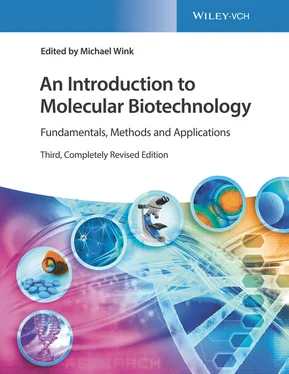





![Andrew Radford - Linguistics An Introduction [Second Edition]](/books/397851/andrew-radford-linguistics-an-introduction-second-thumb.webp)

